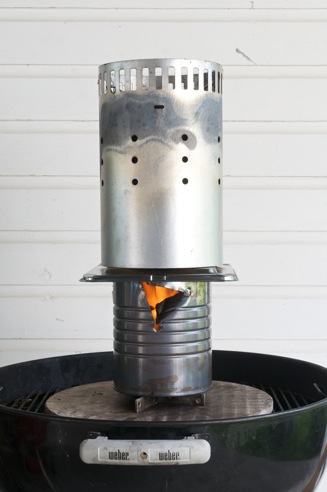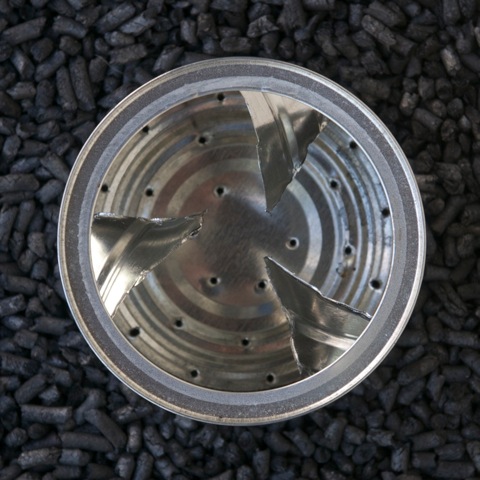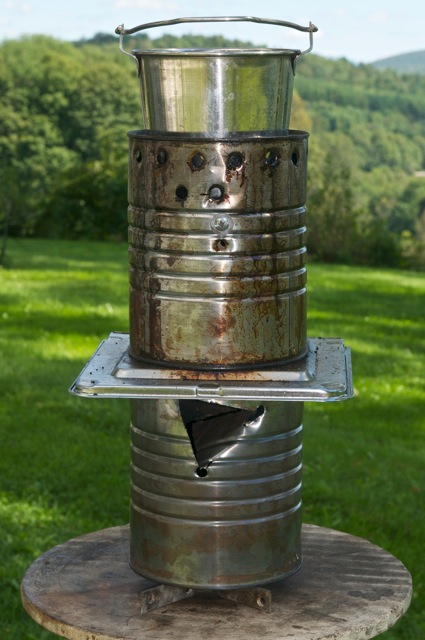iCan D with vortex fins



- Log in to post comments
Jock Gill, Vermont, 2011
Jock's new TLUD Design. It has a passing similarity to Lanny Henson's Sidewinder, but instead of 4 symettrical slits, to provide the 'vortex' at the heart of the cooker. The iCan D uses only three secondary air apertures for maximum turbulence and asymmetry. It also uses a more triangular cut arranged such that the resulting tab is at 45 degrees and can, when folded into the can, act as both a vortex generator and a concentrator.
Currently I have only tested the mid-sized coffee can unit with 142 grams of fuel. This gives me a runtime of about 27 minutes -- start to flame out. It has yielded 21.8%% biochar as a percent of weight of fuel -- soft wood pellets.
It gets good results when loaded with 25% of the capacity of the can - in this case about 142 grams of wood pellets. Run time: 27 minutes. Smoke gone in well under two minutes. Biochar was very clean, 100% charred fuel with no floaters in a water quench. Minimal ash. Biochar harvest was 21.8% of the weight of the starting fuel load. Only minimal soot in the stack gases for about 3 minutes at the peak period.
The three combined vortex generator / concentrator tabs are at 45 degrees -- half way between maximum draft and maximum concentrator effect.
So far, for a naturally aspirated TLUD, this looks like a good balance between: 1] thermal energy production; 2] clean stack gases; and 3] max quality & amount of biochar harvested.
Larger Unit Results
Tomorrow, I will have a larger unit of the same design, but made from a 3 lbs Costco coffee can. I will give it a number of tests, including boiling water, and will pass these along to you. With some photos, if the weather is not too nasty. Otherwise, photos after the hurricane has passed us by.
Results for water boiling test #2 - with the Weber unit in place from the start.
Ambient temp: 17.2 C / 63 F
Amount of water: 750 ml
Boiled in 20 minutes.
Continued to boil for 29 minutes
Peak boiling: 43 - 47 minutes
Evaporated: 250 ML
Run time: 49:30
Smoke gone in 90 seconds
Biochar harvest: 127 g = 23% Passed all 7 tests.
By watching the boiling water it was very easy to see the variations in thermal energy released by the pyrolysis over time. Interesting visualization of the non-linear nature of the process.
I have attached two photos. More details on the iCan D design if you want them. Just ask. OK!
Cheers,
Jock
Jock Gill
PhotoPyroWorks
P.O. Box 3
Peacham, VT 05862
Carbon Negative Solutions
(G) (802) 503-1258
"Photosynthesis converts atmospheric CO2 into organic carbon which is 50% of all biomass. With pyrolysis, we can create carbon negative energy as we harvest carbon in the biomass for many beneficial uses."
Nike shoes | Nike Air Max 270
